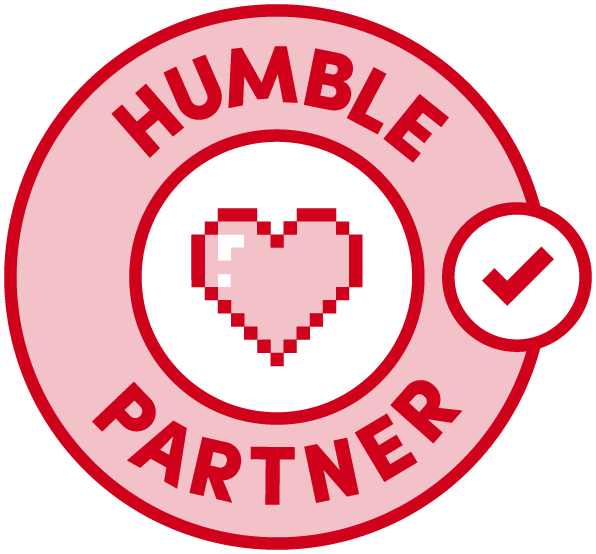The Hard Costs Of Making A Game Alone
Game development is a risky endeavor. Between designing, programming, QA testing, and all the other steps involved, you can spend years working on the same project. There’s no guarantee that what you’ll make will be well-received when it’s released and, even if it is, a lack of exposure could still spell financial loss. There’s a lot of pressure to succeed, and failing to meet expectations might mean there’s not enough money for a next time.
And yet, despite this pressure, there are some people out there who choose to shoulder this burden alone. There are over a dozen success stories of indie developers who forged ahead with little to no outside help, managing to achieve both wide-spread critical acclaim for their work and earn enough money to make a living. It’s not a very common occurrence though, and asking those who’ve managed to do it reveals plenty of reasons as to why that could be the case. Developing a game can already be a fairly mentally and emotionally taxing process, and doing it solo without a support system can exacerbate the stress and feelings of self-doubt. Some appreciate this challenge, but others do not.
Jonathan Blow, Derek Yu, Lucas Pope, and Joakim Sandberg each has a history of going it solo in developing at least one indie game that caught traction and went on to be both a critical and financial success. Blow is commonly cited for inspiring the indie game boom that started in late 2008 with Braid, before going on to design the critically acclaimed 2016 puzzle game The Witness. Yu’s initial open-source Spelunky is also a part of that pre-2010 indie boom, and Yu is now working on its sequel, Spelunky 2. Pope made a name for himself in 2013 with Papers, Please and then went on to wow the industry again with 2018’s Return of the Obra Dinn. Sandberg delivered the well-received metroidvania-inspired Iconoclasts in 2018.
Each of the four, as it turns out, express similar experiences of the emotional and mental toll associated with developing a game solo. Pope and Yu had more positive things to say about the process, while both Blow and Sandberg expressed more instances of pressure and stress that accompanied the development of their respective breakout hits Braid and Iconoclasts.
“[You] get mowed under by the sheer amount of stuff there is to do to finish a game,” Blow said when asked about the hardships he had to overcome to finish Braid. “And so, you have to believe that you will be able to finish eventually, which sometimes is hard to believe… If you start believing it’s too much to ever do, and your motivation starts falling, then you get less done every day. And then [you believe] there might be too much to do because your rate of progress toward the goal is not so good. And when you see that, you might get upset about that or depressed about that, and then it gets worse… There just is something fundamentally, mentally hard about working on a game where you’re the main person.
“[It’s] actually easier in a bigger company,” Blow continued. “Because I think you can rest a little bit and you can at least, even if not everybody else is working hard, you at least feel like other people are doing something and that you’re allowed to relax a little bit and the whole thing won’t collapse. Whereas, if it’s your project and without you it won’t go forward, then it’s very easy to feel like it’s just going to die at any minute and that you don’t have the luxury of relaxing when you need to relax. And it’s just a bad combination.”
Blow’s primary motivation for using Super Mario Bros. as inspiration for Braid is that Nintendo’s game is simple and thus fairly easy to emulate. “3D games are a lot of work,” he said. “I told myself, ‘Look, I’ve done all these technical projects that were super ambitious, and I never finished them. So let’s make a project that is technically as easy as we can make it, but put all the effort into the design because the design seems more finishable.” Both Yu and Pope similarly went as simple as they could right from the start. “Yeah, I started small and I just kind of kept the scope to something that I could really do by myself,” Yu said.
All four developers endorse some level of personal restriction at the outset of making a game. On the surface, this can look counterproductive, but it ensures the game is completed in a reasonable time frame–which, in the long run, can curb a lot of the pressure and self-imposed stress to finish. It’s something Blow, Yu, and Pope learned through their experiences prior to their major breakout hits, as all three were members of game development teams before going it alone with Braid, Spelunky, and Papers, Please respectively. As a counterexample, Sandberg placed few restrictions upon himself when he started on Iconoclasts in 2010 (when he was in his early 20s) and the game continued to evolve and grow more complex for years, ultimately releasing when he was in his 30s and more appreciative of the wisdom found in self-imposed restrictions.
“You just have more people, and as a result, more people are struggling.”
Despite the process allowing him to produce one of the more well-known indie gems of 2018, Sandberg hopes that no one ever emulates what he did. “People shouldn’t follow in my footsteps,” he said. “Working this hard solo and giving all their life, essentially, all their time to a project and ignoring everything else… Being that antisocial and not interacting with people enough depletes tetralin in your brain–it creates depression. If you do it for that long you’re going to get depression, regardless if you have genes for it. You need to actually take weekends off, you need to not let friends disappear, you definitely need to be able to support yourself because you shouldn’t go into debt making a game–which I luckily didn’t.”
“I kept telling myself, ‘When the game is done, I can get a life again,'” Sandberg continued. “Instead I kind of collapsed afterward. Yeah, it was entirely my own fault for pushing myself that hard, but it’s easy to fall into that trap. You keep saying, ‘As soon as this is done, it’s going to be great.’ Then your body realizes that you worked a little too hard.”
Sandberg also had to break into an indie game landscape that looks very different than how it was a decade prior. None of the four believe the industry is heading towards some indie game apocalypse that will see the market implode on itself, but they agree the space has been saturated with a lot more titles in recent years–making it far more difficult for individual indie creators to find their audience and thrive. It’s a problem that wasn’t as nearly as big back in 2008. “You just have more people, and as a result, more people are struggling,” Yu said. “I could certainly see from the perspective of people who are trying to enter the space and struggling, it does feel like there’s an indie-pocalypse and they’ve got to work extra hard to be seen, and I do feel some of that pressure myself. And even though I know I have a leg up just having some visibility and being in this industry for a while now, everything still feels a little tenuous, even for me.”
To be noticed and garner some level of critical and financial success, your best bet is name recognition from a previous success. “For someone who’s just starting out?” Blow said, “I don’t know, because you know, the biggest problem is just getting attention for your game. How do I get players to care that we released this game? I have that problem less than a lot of people simply because I’m already established.”
“But then again, if I had made a bunch of smaller games, maybe no one would’ve noticed them. I wouldn’t have been able to financially support myself. You can never guess.”
Without the name recognition, you need to find a well-known publisher, such as Trinket Studios’ Battle Chef Brigade with publisher Adult Swim, or build something that creatively explores a theme in a way that hasn’t been done much (or at all) before, like Matt Makes Games’ Celeste. Regardless of which strategy you go for, both are far more achievable–and thus less stressful to aspire for–when working within a team. As Sandberg can attest, you can do it alone, but it will probably take you much longer and likely lead to hours of crunch. Not ideal if you want to maintain a healthy work-life balance.
Even Pope, who enjoyed his time working on both Papers, Please (which took him nine months) and Return of the Obra Dinn (which took him five years), admits that crunch is just a part of his process now as a solo developer. “I crunched for thousands of hours on Obra Dinn but it was all self-imposed and in the end, I’m happy with how the game turned out,” he said. “I consider long grinds and moments of intense crunch a necessary part of my game development process.”
Blow, Pope, Yu, and Sandberg don’t hate game design. They wouldn’t still be doing it if that was the case. But the pressure to make something that people are willing to spend money on (while maintaining the original vision they’re proud of) can make the process more stressful than they like.
“Some days I sit and think, ‘How many games could I have made instead of Iconoclasts,'” Sandberg said. “But then again, if I had made a bunch of smaller games, maybe no one would’ve noticed them. I wouldn’t have been able to financially support myself. You can never guess.” On this topic, Yu said, “I think if you’re making a commercial product, it’s a lot easier to work on a team to shoulder that burden a little bit… Once money becomes involved, it’s not just that it changes your expectations, you know it’s going to change everybody’s expectations. Because people are going to have to spend money on it and you know that reviewers are going to take it more seriously. You’re thinking about Metacritic. All kinds of stuff come into play that don’t when you’re working on freeware.”
As it stands, in today’s indie scene, it doesn’t seem very probable you’ll create an indie breakout hit when you’re still operating solo.
Since their breakout hits, Blow and Yu have returned to working as part of a team, though they maintain control over the overall design of their games. “Having more people just really helps,” Blow said. “The Witness is a way bigger and more complex game than Braid, and part of the reason that could happen is that we had other people building the engine and making the art. If it had been mostly me, it just would not have been possible to make a game that big.” Yu is currently working with BlitWorks–the studio responsible for porting Spelunky to PSN–to develop Spelunky 2. Blow and Yu’s transition back to working with others is becoming a more widespread standard in recent years, as more indie developers see that a team can stave off some of the stressors that are predominantly associated with indie game development. When Eric Barone decided to put his newest project on hold to work on more updates for Stardew Valley, for example, he wrote in a blog post that he would be hiring help to “take some of the workload off,” and Undertale‘s Toby Fox has explicitly stated he will only make the follow-up chapters to Deltarune: Chapter 1 once he’s put a team together because continuing to make the game on his own is “actually impossible.”
This makes Pope and Sandberg, who have continued to operate solo after their breakout hits, part of a dwindling breed. Though Pope has found success with his follow-up to Papers, Please–Return of the Obra Dinn was met with widespread success and is one of our top 10 games of 2018–he still had to scale back in terms of visuals and number of gameplay mechanics. Though, he admits he does “personally enjoy” the challenge of scaling back a game’s scope far enough so that he can make it himself. Sandberg has adopted a similar approach for his next game, making a plan for something that’s manageable as opposed to trying to design something that’s as big as he can make it. “I don’t hate the idea of [making a game] alone, but I have to start properly,” Sandberg said. “I’m going to prototype [my new game] and see what happens. It’s going to be an action game and smaller [than Iconoclasts], something that I can do alone and add onto later if need be. Which means, no story. The story is what makes a game huge.”
As it stands, in today’s indie scene, it doesn’t seem very probable you’ll create an indie breakout hit when you’re still operating solo. Trying to do so certainly seems emotionally and mentally unhealthy as well, as there’s a good amount of crunch you have to deal with on your own. Which isn’t to say it’s an impossible task, but if you’re planning on following in the mainstream successes of popular indie games such as Dead Cells, Outlast, Into the Breach, Hollow Knight, Doki Doki Literature Club, and Gone Home, then recruiting a well-structured team (or at least finding a good partner) seems to be a far more practical course of action.
from GameSpot – Game News https://www.gamespot.com/articles/the-hard-costs-of-making-a-game-alone/1100-6467927/








